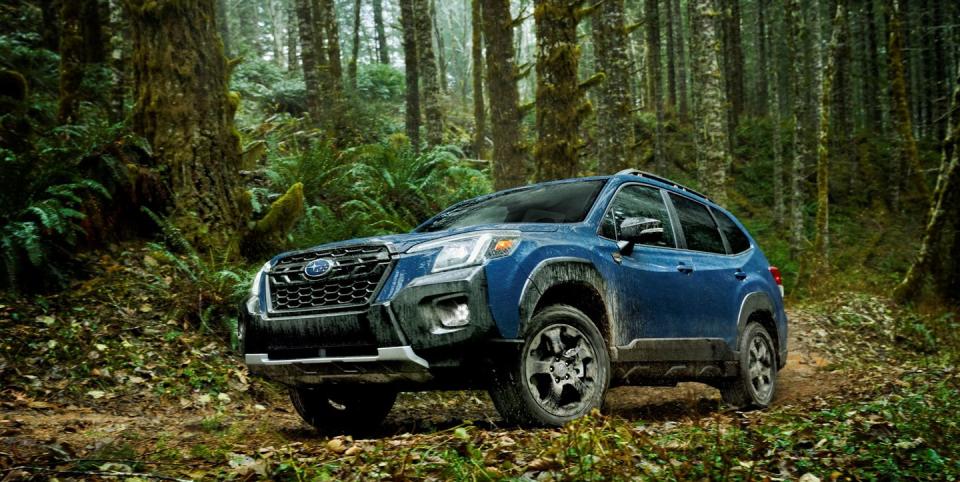The Subaru Forester Wilderness Is a Forester Prepared for the Trails

The Subaru Forester is the prototypical crossover: Just big enough to hold what an everyday buyer needs, just car-like enough to evoke the memories of driving smaller and less versatile cars, and just capable enough to handle a comparable sedan off-road. The Subaru Forester Wilderness retains the first two traits, but it takes the third as a challenge. This is what happens when Subaru decides a Forester needs to be trail-capable.
That capability is relative. The Forester Wilderness shines in comparison to the base Forester, starting with half an inch of added ground clearance and an accompanying increase of 3.5 degrees, 0.8 degrees, and 1.4 degrees in approach angle, departure angle, and breakover angle, respectively. But this is a car that will be compared directly to the compact crossover most directly designed with off-roading in mind, the Bronco Sport Badlands. While the total 9.2 inches of ground clearance eclipses the baby Bronco's 8.8 inches, final approach, departure, and breakover angles of 23.5, 25.4, and 21 degrees are effectively trounced by the Bronco Sport's respective measurements of 30.4, 33.1, and 20.4 degrees.
The Forester Wilderness is powered by a 2.5-liter flat-four putting out just 185 horsepower and 176 lb-ft of torque, a number comfortably beaten by its turbocharged Outback Wilderness sibling. Like that car, however, the Wilderness comes with an adjusted final drive ratio (4.11:1, compared to 3.70:1 for the base Forester) that helps the driver access low-end torque more easily. For the very specific driver looking for even more control in their Forester on intense trails, the CVT's 8-speed manual function also features Wilderness-specific lower ratios.
Being a modern Subaru, the Forester Wilderness is equipped with standard all-wheel drive. It also comes with X-MODE selectable terrain assistance, which has distinct settings for snow/dirt and deep snow/mud. That feature also helps the car enter its automated climbing mode, which immediately brings the CVT back down to its lowest ratio when it senses a serious incline at low speeds. Additional digital trail aides include a front-view camera and an automated descent mode at speeds below 12 MPH.
The interior is similarly designed for more time spent in the wilderness than a typical Forester. Seats are upholstered in water-repellant synthetic material and trimmed with a Wilderness logo also seen on the all-weather floor mats. Both the folding rear seatbacks and main cargo area are lined with a waterproof material to accommodate gear fresh from the streams, lakes, and rivers the Forester Wilderness is designed to reach.
Towing capacity has been doubled to 3000 lbs, still 500 short of what the Outback Wilderness can accomplish. The ladder-type roof rack can only carry 220 lbs at speed, but that number jumps to 800 lbs when parked for additional roof-mounted tent support. Like its outback cousin, a Forester Wilderness will be easily identified by aggressive body cladding, exclusive wheels, and Yokohama all-terrain tires. The car's signature color, Geyser Blue, is also unique to the Wilderness line.
The new-for-2022 Forester Wilderness starts at $32,820, coming in $7625 higher than the base Forester.
You Might Also Like

 Yahoo Autos
Yahoo Autos 